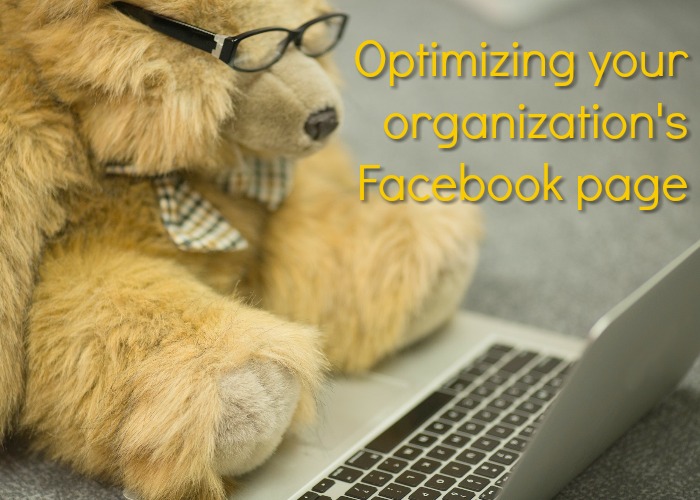 As the number of organizations using Facebook grows, so does the need to have a well-managed and organized Facebook page that looks professional while conveying your organization’s story and ‘soul’ at the same time. With so many pages out there, you truly have to build a page that can draw your audience in and keep them engaged. With this in mind, we’ll be running several blogs to help organizations use Facebook for maximum benefits. For this first post, we’ll be sticking to the basics on how to set up a standard Facebook page for your organization. Subsequent posts will explore tools for making quality content, deciding what and when to post, and much more. Stay tuned! Until then, here are our top five tips for setting up a professional Facebook page for your organization:
As the number of organizations using Facebook grows, so does the need to have a well-managed and organized Facebook page that looks professional while conveying your organization’s story and ‘soul’ at the same time. With so many pages out there, you truly have to build a page that can draw your audience in and keep them engaged. With this in mind, we’ll be running several blogs to help organizations use Facebook for maximum benefits. For this first post, we’ll be sticking to the basics on how to set up a standard Facebook page for your organization. Subsequent posts will explore tools for making quality content, deciding what and when to post, and much more. Stay tuned! Until then, here are our top five tips for setting up a professional Facebook page for your organization:
1. Use a Facebook Business page
Perhaps the most fundamental to making sure your page is professional is ensuring that you are using a Facebook business page, and not using a profile intended for an individual. You’ll want to start by clicking the “Create Page” link from the options on the left side of your news feed. For most organizations in the animal protection field, you will then choose either the “Company, Organization or Institution” field or the “Cause or Community” field. If choosing “Company, Organization or Institution” field, you’ll need to specify “Non-Profit Organization” or the type of organization that best describes your organization.
2. Personalize your Facebook page’s URL
Once you set up your page, you should update the URL for the page. The URL, or web address, is the link that will bring people to your page. Facebook automatically assigns a number to each new business page, but it is up to you to make sure that your Facebook page’s URL is something that is easy to remember (it should probably be your organization’s name) and professional (for example, www.facebook.com/WorldAnimalNet). Be careful what you choose! It can only be changed once, and it is not an easy process.
Hubspot has a great resource on how to set up and navigate the basics of a new Facebook page here.
3. Fill out your information.
Be sure that the “About” section for your page gives visitors a good sense of what you do and that it is clear what your organization’s mission is. The “Short Description” section will show up in the condensed “About” page that people see when they first click the “About” link, so be sure that this is filled out.
Also, if it is applicable to your organization, add “Milestones,” such as when your organization was founded or any successful campaigns. You can do this by going to your Timeline and clicking on “Offer, Event, +” on the top of the status update box. Choose “Milestone,” and then fill out the appropriate information.
4. Add a “Donate Now!” button.
If your organization’s page is registered with Facebook as a nonprofit (as suggested in point number 1 above), you may choose to add a “Donate Now” call to action button which will appear on the lower left side of your cover photo. It’s super easy to do, just follow the instructions here.
However, it may be advisable to first get experienced advice in respect to whether a donate button may trigger obligations to register with various state agencies. See related resources here and here.
5. Add a useful tab.
By using Facebook apps, you can add tabs to your page that are relevant to your organization. These will appear just beneath your cover photo next to tabs for your Timeline and your organization’s About page. For example, using the Add a Link app will allow you to add a link of your choosing to the tab.
If you send regular email newsletters, you can also provide a link for people to subscribe to your newsletter here as well if the company you use has a Facebook integration. For example, if you use MailChimp, you can add a newsletter subscription form directly to your Facebook page by using the directions here. If you have a different bulk email provider, do a Google search for their Facebook integration, or contact their customer support to see if they have a similar app.
Do you have Facebook tips of your own? Share them in the comments!

